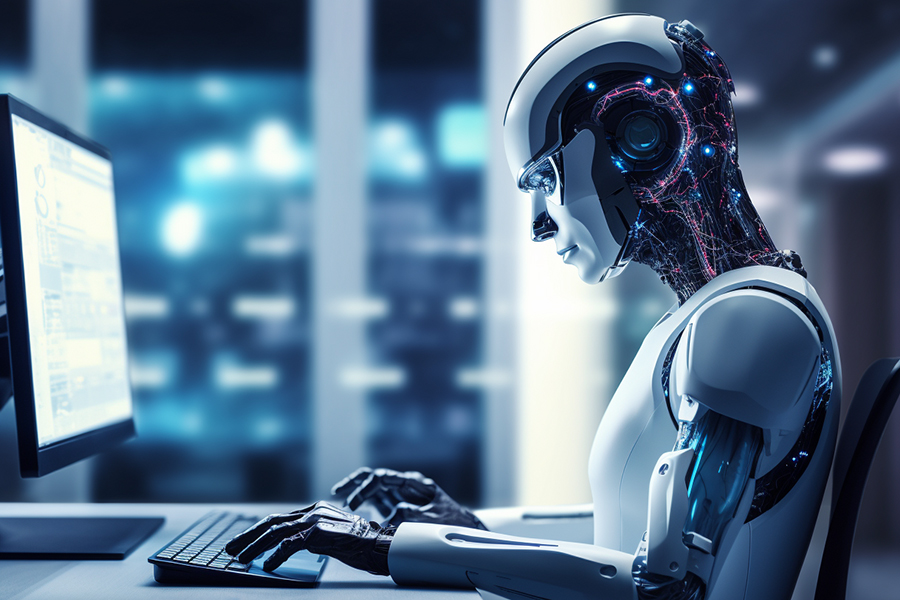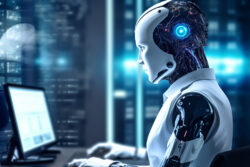Nowadays in manufacturing, especially in the packaging field, being competitive means more than just working efficiently. It requires quick and accurate innovation. And that´s where the use of artificial intelligence steps in. The mix of machine learning and SAP ERP software plays a key role, ushering in a new era for product customization.
Imagine a scenario where complex packaging solutions are tailored with precision, drawing on vast data sets, historical trends, and intricate specifications.
This article delves into the main aspects of use of artificial intelligence within the ERP environment focusing on the specific realm of product configuration within the packaging industry.
Fundamentals of the artificial intelligence
Looking ahead, let’s break down these terms. Artificial intelligence (AI) covers machines performing tasks that require human intelligence. Within AI, there’s machine learning, which is based on using algorithms and statistical models that allow systems to improve their performance on a specific task with experience.
Then, there’s deep learning, a part of machine learning that employs neural networks, sort of like our brain’s neurons, to tackle intricate data patterns. Neural networks are composed of interconnected nodes, akin to neurons in the human brain, and are particularly effective for tasks involving large amounts of data and complex relationships.
Background of machine learning in packaging industry
Machine learning comes to the rescue when things get tricky, like in product configurations. It helps to determine how different product features impact the aspects of packaging production, such as machine setup times, material consumption, and waste reduction. Machine learning enables data-driven decision-making for configuring products efficiently in the manufacturing process.
However, one complexity of machine learning based product configuration could be its appearance. Well, mostly due to the nonlinear interactions between product features or effects on machine data. Additionally, you should consider numerous feature combinations, that are required by a substantial effort. For instance, it could be error-prone, making it challenging to capture and measure their impact accurately.
The integration of Machine Learning (ML) and product configurators within ERP businesses represents a synergy that empowers companies to craft personalized and efficient solutions. Machine learning´s data-driven insights enhance product configurators, enabling them to dynamically adapt and suggest tailored product configurations.
This not only streamlines customer interactions but also improves decision-making by analyzing historical data and market trends. Moreover, ML’s capacity to handle complexity ensures error-free and efficient product configurations, while predictive maintenance capabilities extend the lifespan of assets. Together, ML and product configurators revolutionize ERP businesses, fostering agility, precision, and customer satisfaction.
Machine learning surpasses traditional rule-based methods by delving into extensive datasets, identifying intricate patterns, and adapting to new challenges. It resembles learning from a complex puzzle, enabling it to tackle novel problems effectively. It acts as an intelligent assistant that continuously enhances its problem-solving abilities through experience.
Now, let’s dive a bit into the background. Machine learning is part of the larger world of artificial intelligence (AI), where computers are trained to think and learn like humans. It’s like teaching a computer to ride a bike by showing it lots of bike-riding videos. Machine learning takes AI a step further, focusing on giving computers the ability to learn and make decisions from data, without being explicitly programmed for each task. This flexibility is what makes it so powerful, especially when dealing with complex product configurations and their intricate connections.
The need for a machine learning approach arises due to the complexity of product configurations and the interactions between various features. In scenarios like these, where traditional rule-based methods might not be sufficient to handle the intricacies and variations, machine learning can step in. Machine learning algorithms can analyze patterns and relationships in large datasets and learn from them, enabling them to make predictions or decisions based on new, unseen data.
The System Choice
Integrating machine learning into SAP ERP is a strategic decision, offering flexibility and accessibility. This is a robust business software suite that manages core processes efficiently. This integration enhances decision-making, automates tasks, and enables predictive insights. Due to its flexibility, it can provide shelter for custom machine learning solutions, aligned to unique business needs.
Elevating AI in your ERP
- Current Scenario: Imagine a following instance where the process of gathering and categorizing data for precise operational timeframes and planning purposes is a manual and time-intensive task. This means that organizations heavily rely on human efforts to collect and structure data concerning operation times and planning. This method is susceptible to errors, inefficiencies, and delays, all of which can impact overall operational efficiency and decision-making.
- Practical Example: Let’s consider predicting the performance of a machine on the shop floor. In traditional setups, forecasting machine performance often involves manually crafting rules based on historical data. However, this approach has its limitations and consumes significant time. Machine learning, on the other hand, aims to enhance predictions by training a model on historical data pertaining to the machine’s operations.
- Putting it into action: During the implementation phase, a machine learning model is developed to forecast the machine’s performance. Input parameters may encompass a range of factors, including machine configuration, material types, environmental conditions, and more. The data is divided into training and testing sets to accurately evaluate the model’s performance. Training time denotes the duration required for the model to learn from the training data and adjust its internal parameters. Once trained, the model’s response time, indicating how swiftly it provides predictions for new data, becomes pivotal for real-time decision-making.
Summing It Up: Embrace Change for Success
In summary, machine learning shows how, particularly using neural networks can improve product configuration and prediction of operation times in the SAP ERP environment as well as any other ERP system. Ultimately reducing manual efforts and enhancing accuracy in the packaging industry.
By implementing artificial intelligence in various ERP organizations, they can potentially automate the prediction of machine performance, leading to better planning, resource allocation or even operational efficiency. It reduces manual efforts, enhances accuracy. However, AI allows the organizations to adapt to the complexities of product configurations or interactions.



